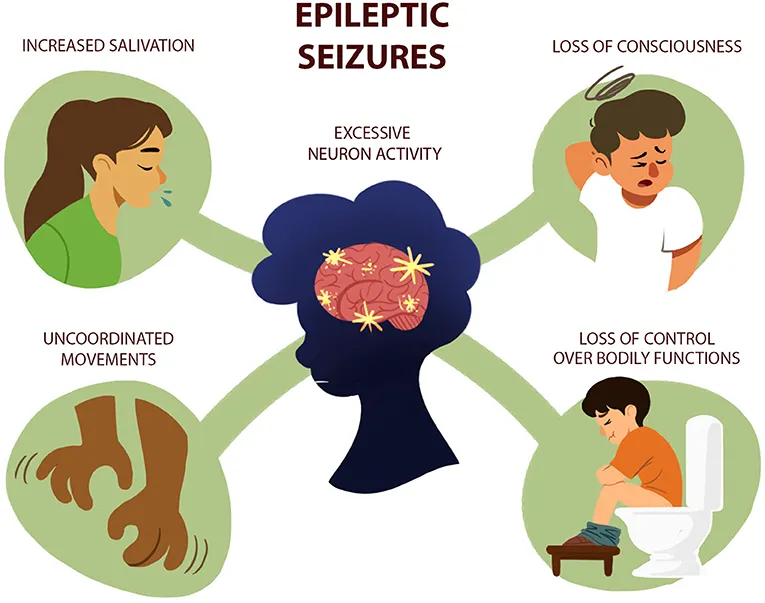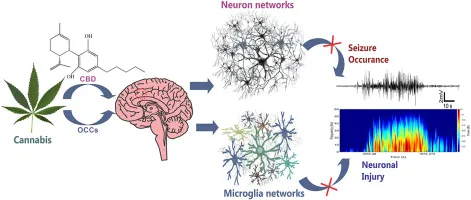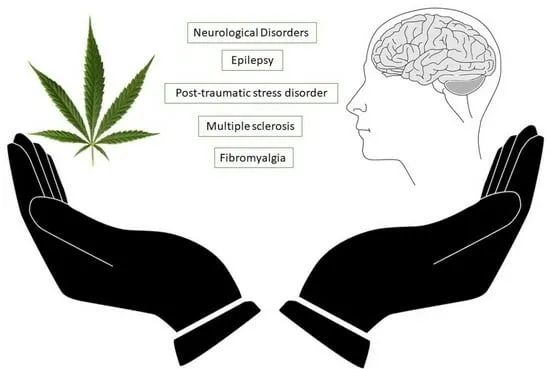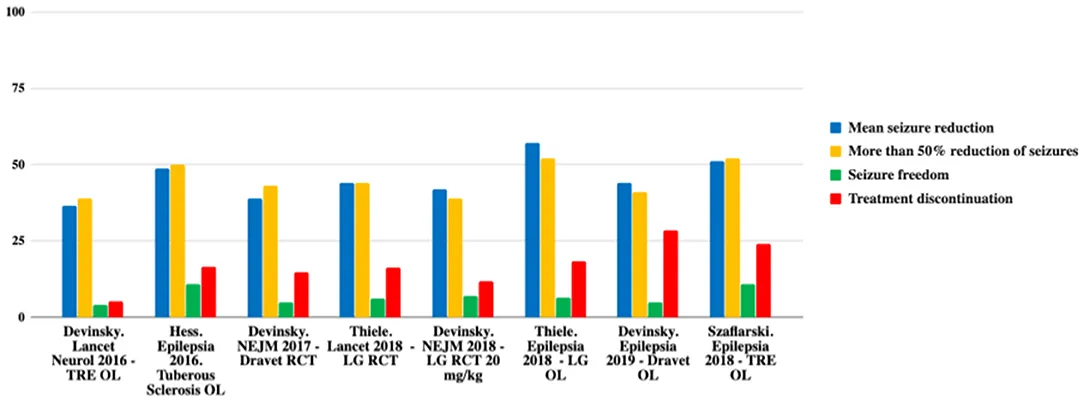Introduction
Epilepsy is a neurological disorder that affects millions of people around the world. It’s characterized by unpredictable seizures that can range from brief lapses in attention to severe convulsions. These seizures can disrupt daily life, making even simple activities a challenge. Traditional treatments, including various medications and therapies, work for many people but not everyone, and some can come with unpleasant side effects.
Recently, there’s been growing interest in an alternative treatment: cannabis. Cannabis, commonly known as marijuana, has been used for centuries for various medicinal purposes. In particular, two components of cannabis—THC (tetrahydrocannabinol) and CBD (cannabidiol)—are being studied for their potential to help manage epilepsy. THC is the psychoactive compound in cannabis that gives you a “high,” while CBD is non-psychoactive and has been linked to various health benefits.
Why the buzz about cannabis? Well, preliminary research and anecdotal reports suggest that these cannabinoids might help reduce the frequency and severity of seizures in some people with epilepsy. CBD, in particular, has caught the attention of both the public and researchers because it appears to have fewer side effects compared to traditional medications.
But what’s the science behind this? How does cannabis work in the brain to potentially help with epilepsy? And, more importantly, is it a safe and effective option for those who struggle with traditional treatments? In this review, we’ll dive into the clinical studies and research exploring the use of cannabis for epilepsy. We’ll break down the findings, discuss the benefits and risks, and look at what this means for those living with epilepsy and their families.
Stay tuned as we unravel the potential of cannabis in the fight against epilepsy and see what the latest studies have to say about this promising alternative treatment.

The Science Behind Cannabis and Epilepsy
Understanding the Endocannabinoid System
To grasp how cannabis might help with epilepsy, it’s essential to understand the endocannabinoid system. This system is a network of receptors and chemicals in the brain and body that helps regulate various functions such as mood, pain, and, notably, seizure activity. Think of it as a sort of internal control system that keeps everything running smoothly.
How Cannabinoids Interact with the Brain
Cannabis contains compounds called cannabinoids, with THC (tetrahydrocannabinol) and CBD (cannabidiol) being the most studied. Cannabinoids work by interacting with specific receptors in the brain known as cannabinoid receptors. These receptors are part of the endocannabinoid system and play a role in managing brain activity.
THC, the psychoactive component of cannabis, can produce a “high.” It interacts with cannabinoid receptors in the brain and may influence seizure activity by altering neurotransmitter levels. On the other hand, CBD does not produce a high. It is thought to help regulate neurotransmitter levels, potentially stabilizing brain activity and reducing the likelihood of seizures.
Mechanisms of Action in Epilepsy
So, how might these cannabinoids impact epilepsy? When cannabinoids interact with the brain’s cannabinoid receptors, they can affect the balance of neurotransmitters—the chemicals that transmit messages between nerve cells. By helping to regulate these neurotransmitters, cannabinoids could potentially prevent the excessive electrical activity in the brain that leads to seizures.
CBD is believed to help by balancing neurotransmitter levels, which may help in preventing the brain from becoming overactive. This stabilization could lead to fewer and less severe seizures. THC’s psychoactive effects might influence brain activity differently. While it could potentially help with seizure management, it also comes with the side effect of feeling high, which might not be ideal for everyone.
The Promise and the Limitations
Cannabis presents a new and exciting avenue for epilepsy treatment, but it’s important to keep in mind that the research is still developing. While early studies suggest that cannabinoids like CBD could offer some benefits, there’s much more to learn about how effective they are, how they should be used, and who would benefit the most.
Clinical Studies on Cannabis and Epilepsy
Study Design and Methodology
To understand how cannabis affects epilepsy, researchers have conducted various types of studies, each with its own approach. These studies range from randomized controlled trials to observational studies, each designed to investigate different aspects of cannabis use for epilepsy treatment. In randomized controlled trials, participants are randomly assigned to receive either cannabis-based treatments or a placebo. This method helps ensure that any observed effects are due to the treatment itself and not other factors. Observational studies, on the other hand, look at people who are already using cannabis for epilepsy to see how it affects their condition over time.
Researchers typically measure outcomes such as seizure frequency, severity, and overall quality of life. They also pay attention to any side effects or adverse reactions. The goal is to provide a clear picture of how effective cannabis might be for managing epilepsy and how it compares to traditional treatments.
Notable Clinical Trials and Findings
One significant area of research focuses on Epidiolex, a cannabis-based medication containing CBD. In studies involving Epidiolex, researchers have observed promising results, particularly for individuals with Lennox-Gastaut Syndrome, a severe form of epilepsy. Participants taking Epidiolex often experienced a reduction in seizure frequency and severity compared to those receiving a placebo. These findings suggest that CBD could be a beneficial option for people with this challenging condition.
Another area of research explores the effects of THC on drug-resistant epilepsy. Some studies have indicated that THC might help reduce seizure activity in individuals who don’t respond well to conventional medications. However, THC can also produce psychoactive effects, which might limit its use for some patients.
Research into cannabis oil, particularly in pediatric epilepsy, has also shown interesting results. Studies have found that children using cannabis oil often experience a reduction in seizures and improvements in overall quality of life. These findings are encouraging, but they also highlight the need for careful monitoring and consideration of potential side effects.

Meta-Analyses and Systematic Reviews
Meta-analyses and systematic reviews are studies that compile and analyze data from multiple individual studies. These comprehensive reviews aim to provide a broader understanding of the effectiveness of cannabis-based treatments for epilepsy. They can offer valuable insights into the overall benefits and limitations of using cannabis for epilepsy management.
Recent meta-analyses suggest that while cannabis-based treatments, particularly CBD, show promise in reducing seizure frequency and severity, the evidence is still evolving. These reviews highlight the need for more rigorous and long-term studies to confirm the findings and address any remaining questions about safety and efficacy.
Benefits and Risks of Cannabis for Epilepsy
Potential Benefits
Cannabis, especially CBD, has shown potential in managing epilepsy, offering several promising benefits. One of the most notable advantages is the reduction in seizure frequency. For many individuals, traditional medications may not be effective in controlling seizures, making cannabis a valuable alternative. Research suggests that CBD can significantly decrease the number of seizures experienced, providing relief for those with difficult-to-treat forms of epilepsy.
In addition to reducing seizures, cannabis might improve overall quality of life. People using cannabis-based treatments have reported better sleep, improved mood, and enhanced cognitive function. This can be especially beneficial for individuals who struggle with the side effects of conventional epilepsy medications, which can sometimes affect mental clarity and emotional well-being.
Possible Risks and Side Effects
While cannabis offers potential benefits, it’s important to consider the risks and side effects associated with its use. One common side effect is drowsiness, which might affect daily activities and overall alertness. Some people also experience changes in appetite or mood alterations, which can impact their quality of life.
Another concern is the potential for long-term risks. For instance, cannabis, particularly THC, can affect cognitive development and mental health. There’s also the risk of developing a dependency on cannabis, although this is less well-documented compared to other substances.
Furthermore, while CBD is generally well-tolerated, it can interact with other medications, potentially altering their effectiveness. This is why it’s crucial for individuals considering cannabis as a treatment to work closely with their healthcare providers to monitor any interactions or side effects.
Balancing Benefits and Risks
When considering cannabis for epilepsy, it’s essential to weigh the benefits against the potential risks. For many, the benefits, such as reduced seizure frequency and improved quality of life, may outweigh the side effects. However, it’s important to approach cannabis treatment with caution and under the guidance of a healthcare professional.
Regulatory and Legal Considerations
Current Regulations
The legal status of cannabis varies widely depending on where you are. In many places, cannabis is classified differently for medical versus recreational use. For instance, in the United States, medical cannabis laws differ by state, with some states allowing its use for various conditions, including epilepsy, while others have more restrictive policies. Cannabis products containing CBD, particularly Epidiolex, are approved by the FDA for the treatment of certain types of epilepsy, such as Lennox-Gastaut Syndrome and Dravet Syndrome. However, THC-based products may face more stringent regulations and may not be as widely available or legally permitted.
In Europe, the legal landscape can be just as varied. Some countries have embraced medical cannabis and allow its use for conditions like epilepsy, while others maintain stricter controls or have yet to fully legalize it. Understanding the specific regulations in your country or region is crucial if you are considering cannabis as a treatment option.
Access and Prescription
Accessing medical cannabis can be a complex process. In many regions, you need a prescription from a healthcare provider who is familiar with cannabis-based treatments. This often involves a thorough evaluation to determine whether cannabis is a suitable option for managing your condition. Even with a prescription, obtaining cannabis products might require navigating a network of licensed dispensaries or pharmacies, which can vary in availability depending on local regulations.
Insurance coverage for medical cannabis is another important consideration. In some areas, insurance plans may cover the cost of cannabis-based treatments, while in others, patients may need to pay out-of-pocket. This can add a financial burden, particularly since cannabis products can be expensive.
Healthcare providers’ attitudes towards cannabis also play a role. While more doctors are becoming open to recommending cannabis-based treatments, some may be cautious or lack sufficient knowledge about its benefits and risks. This can affect your ability to access and receive guidance on using cannabis for epilepsy.
Future Directions in Cannabis Research for Epilepsy
Emerging Research and Innovations
The field of cannabis research for epilepsy is rapidly evolving, with new studies and innovations emerging regularly. Researchers are exploring various aspects of cannabis treatment, including the development of new formulations and delivery methods. For instance, there is ongoing research into novel CBD and THC combinations that might offer enhanced efficacy and fewer side effects. Scientists are also investigating the potential of cannabis-derived compounds beyond CBD and THC, aiming to identify other cannabinoids that could be beneficial for epilepsy.
Advancements in technology are also contributing to this field. New drug delivery systems, such as controlled-release formulations and transdermal patches, are being tested to improve the effectiveness and convenience of cannabis-based treatments. These innovations aim to provide more consistent dosing and reduce the risk of side effects, making cannabis a more practical option for long-term use.
Long-Term Studies and Safety
One of the critical areas of focus in cannabis research is the need for long-term studies to fully understand the safety and efficacy of cannabis-based treatments for epilepsy. While short-term studies have shown promising results, it is essential to evaluate the long-term effects of cannabis use. This includes assessing any potential impacts on cognitive function, mental health, and overall well-being.
Researchers are also studying the effects of cannabis in diverse populations, including children and elderly individuals, to determine how different age groups might respond to treatment. Additionally, ongoing studies are examining the interaction between cannabis and other medications to ensure that combining treatments does not lead to adverse effects.
Policy and Advocacy
As research progresses, there is a growing push for policy changes to support the use of cannabis for epilepsy. Advocacy groups and patient organizations are working to raise awareness about the potential benefits of cannabis and to advocate for more inclusive policies. These efforts aim to make cannabis-based treatments more accessible and affordable for those who need them.
Patient Experiences and Anecdotal Evidence
Real-World Experiences with Cannabis for Epilepsy
Patients and caregivers often share valuable insights into the effectiveness of cannabis for managing epilepsy. Many individuals report significant improvements in seizure control after incorporating cannabis-based treatments into their regimen. For some, the use of CBD, in particular, has led to a notable reduction in the frequency and severity of seizures, providing a new sense of hope and relief.
These real-world experiences highlight the potential benefits of cannabis, especially for those who have not found success with traditional medications. Patients often describe improvements in their overall quality of life, including better sleep, mood stability, and reduced anxiety. These anecdotal reports can be compelling, offering a glimpse into how cannabis might work beyond the confines of clinical trials.
Challenges and Limitations
Despite the positive experiences reported by some patients, others encounter challenges and limitations when using cannabis for epilepsy. One common issue is finding the right dosage and formulation. Cannabis treatment is not one-size-fits-all, and what works for one person may not work for another. Patients often need to experiment with different products and dosages to find what is most effective for their specific condition.
Side effects can also pose challenges. While many people tolerate CBD well, some may experience adverse reactions such as drowsiness, changes in appetite, or gastrointestinal issues. Additionally, the psychoactive effects of THC can be a barrier for those who do not wish to experience a “high” or who find that it interferes with their daily activities.
Support and Community Resources
Navigating the world of cannabis for epilepsy can be overwhelming, but there are numerous support and community resources available to help. Patient advocacy groups and online forums provide platforms for individuals to share their experiences, seek advice, and offer support to others in similar situations. These resources can be invaluable for learning about different products, dosing strategies, and potential pitfalls.
Healthcare providers who specialize in cannabis medicine can also offer guidance and support. They can help patients understand the potential benefits and risks of cannabis, monitor their progress, and adjust treatment plans as needed. Building a supportive network, both online and offline, can make a significant difference in managing epilepsy with cannabis.
Conclusion
Summary of Findings
Cannabis, particularly CBD, has emerged as a promising option for managing epilepsy, offering potential benefits such as reduced seizure frequency and improved quality of life. Clinical studies have shown that CBD can be effective in treating certain forms of epilepsy, with many patients experiencing significant reductions in seizures.
However, while the results are encouraging, there are also risks and side effects to consider, including potential drowsiness, changes in appetite, and interactions with other medications.
The legal landscape surrounding cannabis is complex, varying significantly by region. Access to cannabis-based treatments often requires navigating a maze of regulations, prescriptions, and insurance issues. Understanding the specific legal and regulatory environment in your area is crucial for anyone considering cannabis as a treatment option.
Looking Ahead
As research continues to evolve, the future of cannabis for epilepsy looks promising. Emerging studies and innovations in cannabis formulations and delivery methods could enhance the effectiveness and accessibility of treatments. Long-term studies will be essential in confirming the safety and efficacy of cannabis-based treatments and addressing any potential long-term effects.
Advocacy and policy changes will play a vital role in improving access to cannabis for those in need. Ongoing efforts to raise awareness and push for more inclusive regulations could make cannabis-based treatments more widely available and affordable.
Final Thoughts
Cannabis offers a new avenue for managing epilepsy, particularly for those who have not found relief with traditional medications. While there is still much to learn, the current research and patient experiences suggest that cannabis, especially CBD, can provide significant benefits. As the field continues to advance, it is crucial for patients, caregivers, and healthcare providers to stay informed and work together to optimize treatment strategies.
In summary, the exploration of cannabis as a treatment for epilepsy is an exciting and evolving field. With continued research, support, and advocacy, cannabis has the potential to become a valuable tool in the management of epilepsy, offering hope and improved quality of life for many individuals.


